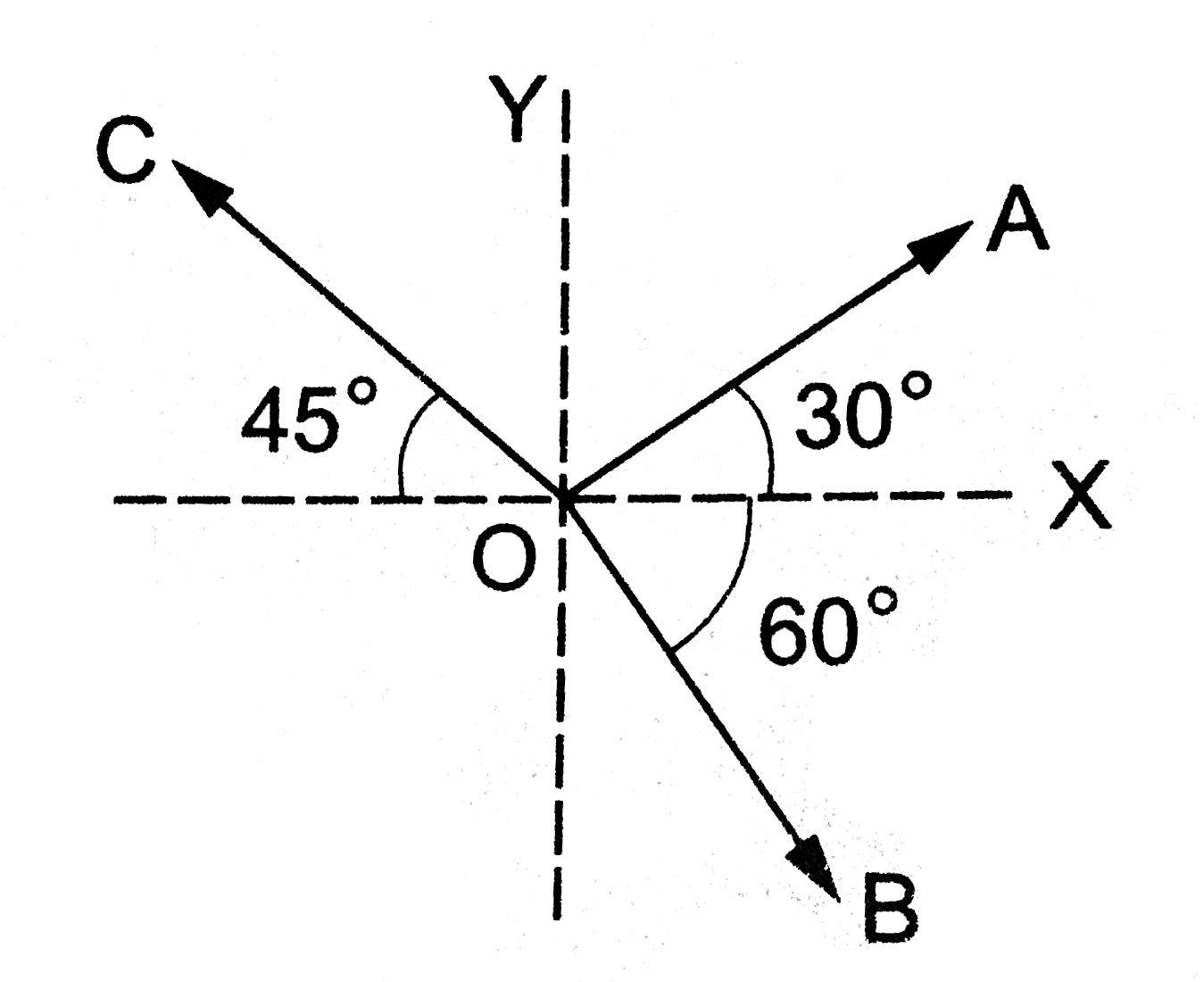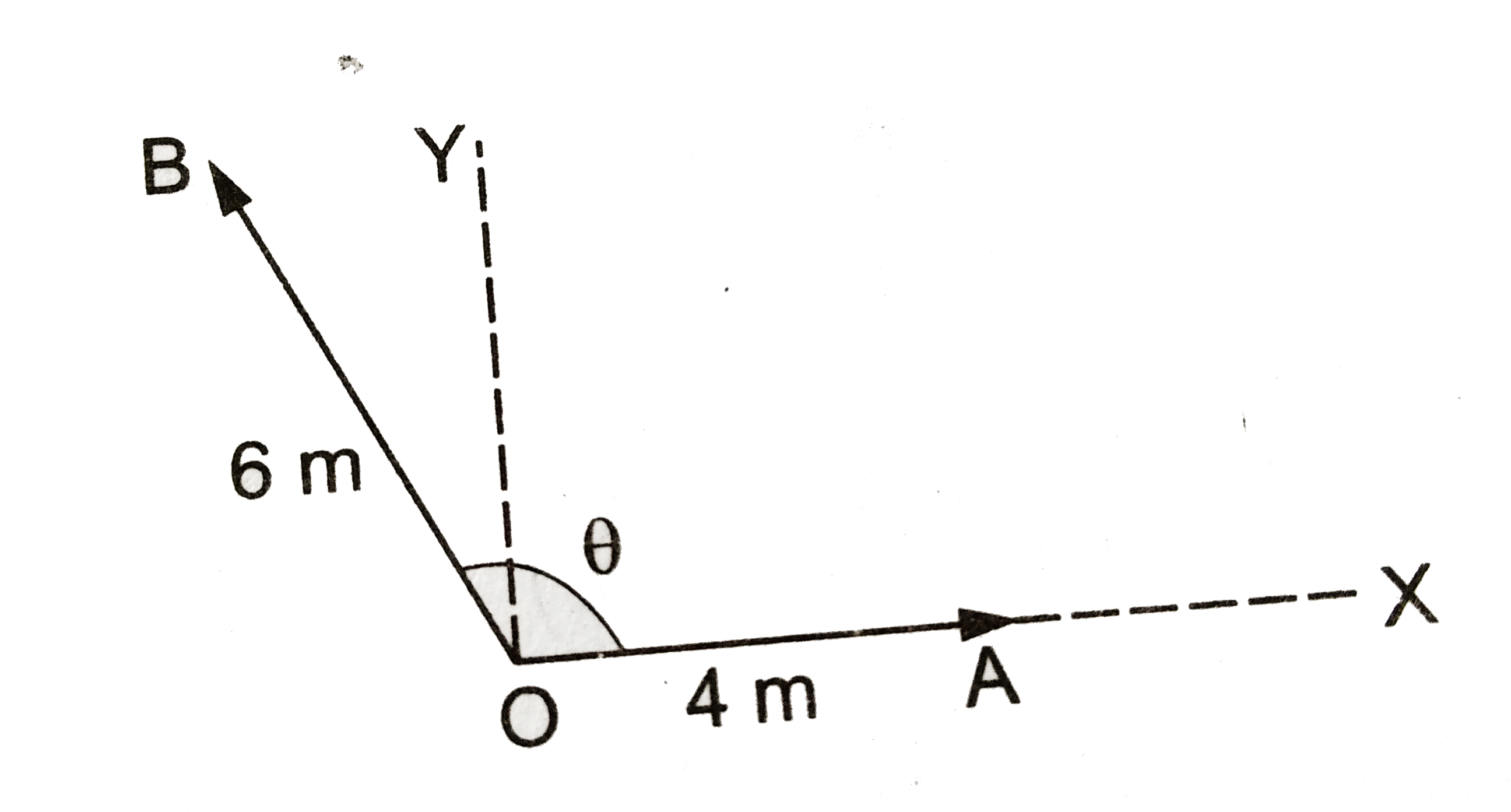Complete Solutions to Worked Out Examples of chapter PHYSICS AND MATHEMATICS of Class 11 book with complete answers and questions
| Class 11 | PHYSICS |
| Chapter | PHYSICS AND MATHEMATICS |
| HC VERMA | Worked Out Examples |
| Number Of Questions | 18 |
| Academic Year | 2023-24 |
A vector has component along the X-axis equal to 25 unit and along the Y-axis equl to 60 unit. Find the magnitude and direction of the vector.
View SolutionFind the resultant of the three vectors shown in figure (2W1).
 .
.
View SolutionThe sum of the three vectors shown in figure is zero. Find the magnitudes of the vectors `vec(OB) and vec(OC)`.
View SolutionThe magnitude of vectors `vec(OA), vec(OB) and vec (OC)` in figure are equal. Find the direction of `vec(OA)+vec(OB)-vec(OC)`.
 .
.
View SolutionFind the resultant of the three vectors `vec(OA), vec(OB)` and `vec(OC)` shown in figure. Radius of the circle is R.

View SolutionThe resultant of vectors `vec(OA) and vec(OB)` is peerpendicular to `vec(OA). Find the angle AOB.

View SolutionWrite the unit vector in the direction of `vecA=5veci+vecj-2veck`.
View SolutionIf `|veca+vecb|=|veca-vecb|` show that `veca_|_vecb`.
View SolutionIF `veca=2veci+3vecj+4veck and vecb =4veci+3vecj+2veck` find the angle between `veca and vecb`.
View SolutionIf `vecA=2veci-3vecj+7veck, vecB=veci+2veck and vecC=vecj-veck` find `vecA.(vecBxxvecC)`.
View SolutionThe volume of a sphere is given by
`V= 4/3 pi R^3`
where R is the radius of the sphere a. Find the rate of changeof volumke with respect toR. B. Find the change in volume of the sphere as the radius is increased from 20.0 cm to 20.1 cm. Assume that the rate does not appreciably change between R=20.0 cm to R=20.1 cm.
View SolutionFind the derivastive of the following functions with respect to x. a. `y=x^2 sinx, b. `y= (sin x)/x and c. y=sin (x^2)`
View SolutionFind the maximum or minimum values of the function `y=x+1/x` for `xgt0`.
View SolutionFigure shows the curve `y=x^2`. Find the area of the shaded part between `x=0 and x=6`.

View SolutionEvaluate `int^t _0 A sin omega dt ` where A and omega are constants.
View SolutionThe velocity v and displacement x of a particle executing simple harmonic motion are related as
`v (dv)/(dx)= -omega^2 x`.
`At x=0, v=v_0.` Find the velocity v when the displacement becomes x.
View SolutionThe charge flown through a circuit in the time interval between `t and t+dt` is givne by `edq=e^(-t/tau)dt,` where `tau` is a constnt. Find the total charge flown through the circuit betweent `t=0 to t=tau`.
View SolutionEvaluate `(21.6002+234+2732.10)xx13.
View Solution
Worked Out Examples questions and complete solutions for chapter PHYSICS AND MATHEMATICS of HC VERMA PHYSICS (HINGLISH) of Class 11